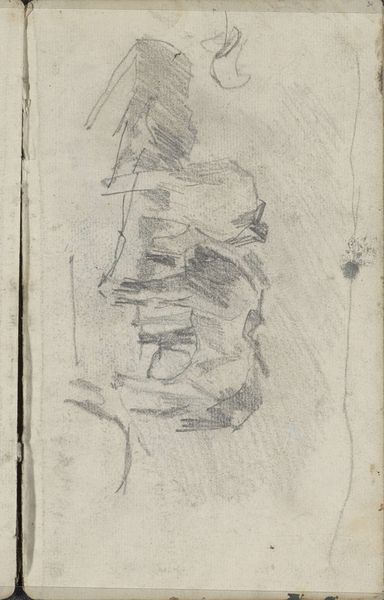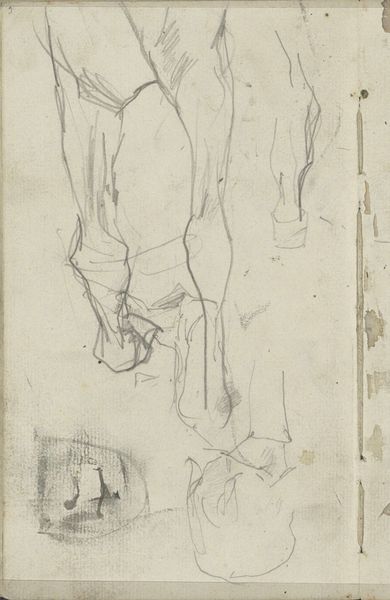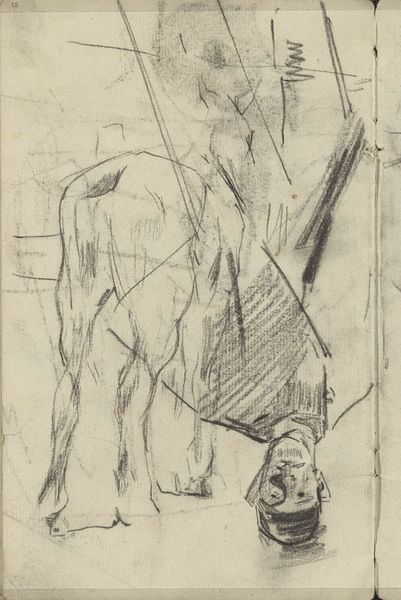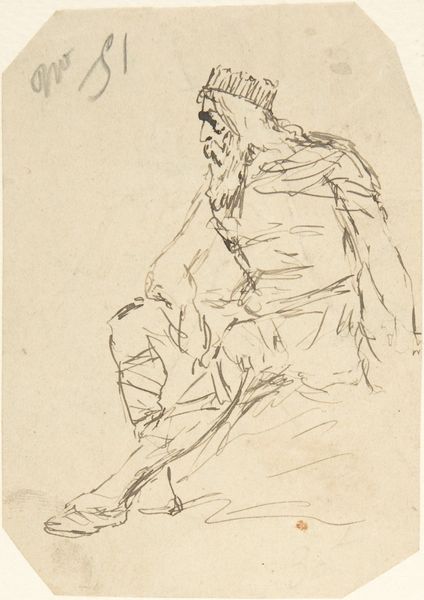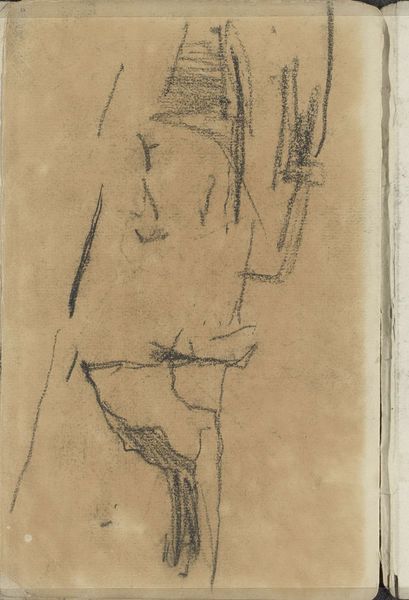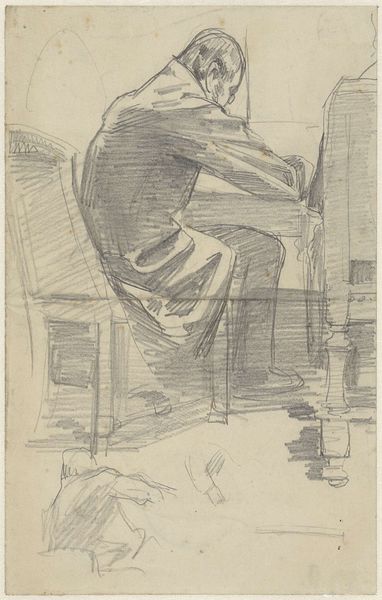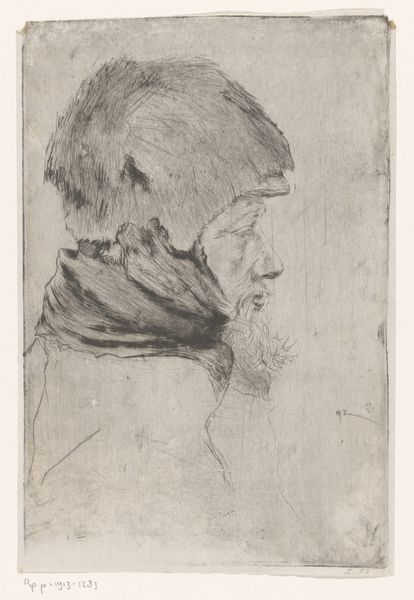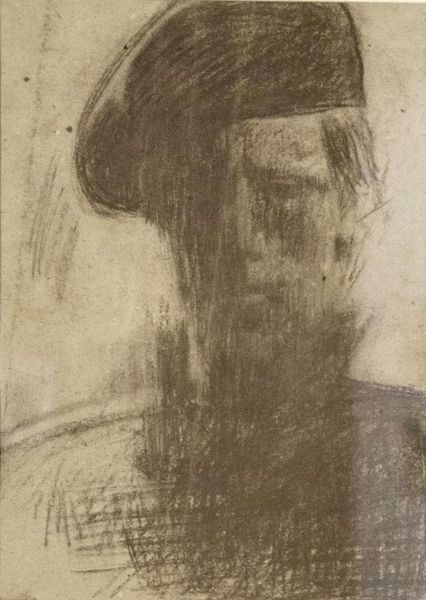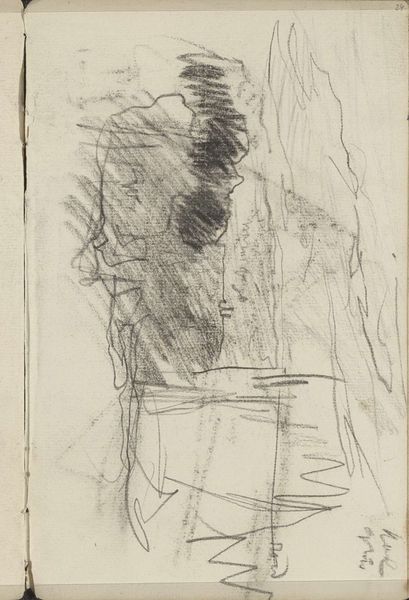
drawing, pencil
#
portrait
#
pencil drawn
#
drawing
#
amateur sketch
#
toned paper
#
light pencil work
#
pencil sketch
#
incomplete sketchy
#
figuration
#
personal sketchbook
#
detailed observational sketch
#
pencil
#
sketchbook drawing
#
pencil work
#
realism
Copyright: Public Domain: Artvee
Editor: Looking at this work by James Ensor, "Portret van Willy Finch op de rug" from 1880, what immediately strikes you? It's a simple pencil drawing. Curator: The immediate impression is one of somber introspection, wouldn’t you agree? Note how the artist uses cross-hatching to model form and shadow, lending weight and a quiet dignity to the subject even with the sketch-like nature of the lines. Editor: Exactly! That rapid, almost frantic sketching—it speaks to me about the accessibility of art making. It seems anyone can quickly seize a pencil, reuse a sheet of paper, and try to represent a subject with whatever means available to them. And in this particular case, it's another artist that he's portraying! Curator: Precisely. However, the form transcends its raw components. The deliberate use of toned paper is essential; it establishes a visual ground, a departure point from which the artist builds up darker values and defines volume. This tonal interplay gives it a complex visual texture, lifting it beyond the mundane and the materiality of the paper itself. Editor: I see it more as celebrating that texture! Think about the roughness of the paper itself influencing the final texture. What does it say about art history at this time? How is this paper significant in the making of drawings? It's far from being marble or even canvas. Curator: Yes, but consider the contrast. See how that heavy rendering in the upper body leads our eye directly to the signature in the lower right. This compositional harmony directs the viewer's gaze through specific vectors of artistic intention, imbuing it with structured purpose. Editor: And this intention might also be linked to art and design trends in the late 19th century that elevated drawing to an art in itself and recognized that a sketch can be just as interesting and accomplished as a finished painting or sculpture. What do you think? Curator: I can appreciate that sentiment. Although seemingly informal and modest in its making, Ensor is nevertheless utilizing traditional principles in terms of perspective, shadow, and representation. A structured contrast is always implicit, I would posit. Editor: Agreed! Ultimately, seeing the artwork through your formalism or my materialism leads us to understand the work’s multifaceted appeal, both aesthetic and contextual. Curator: A perfect illustration of the vital interplay between intent and reception!
Comments
No comments
Be the first to comment and join the conversation on the ultimate creative platform.

